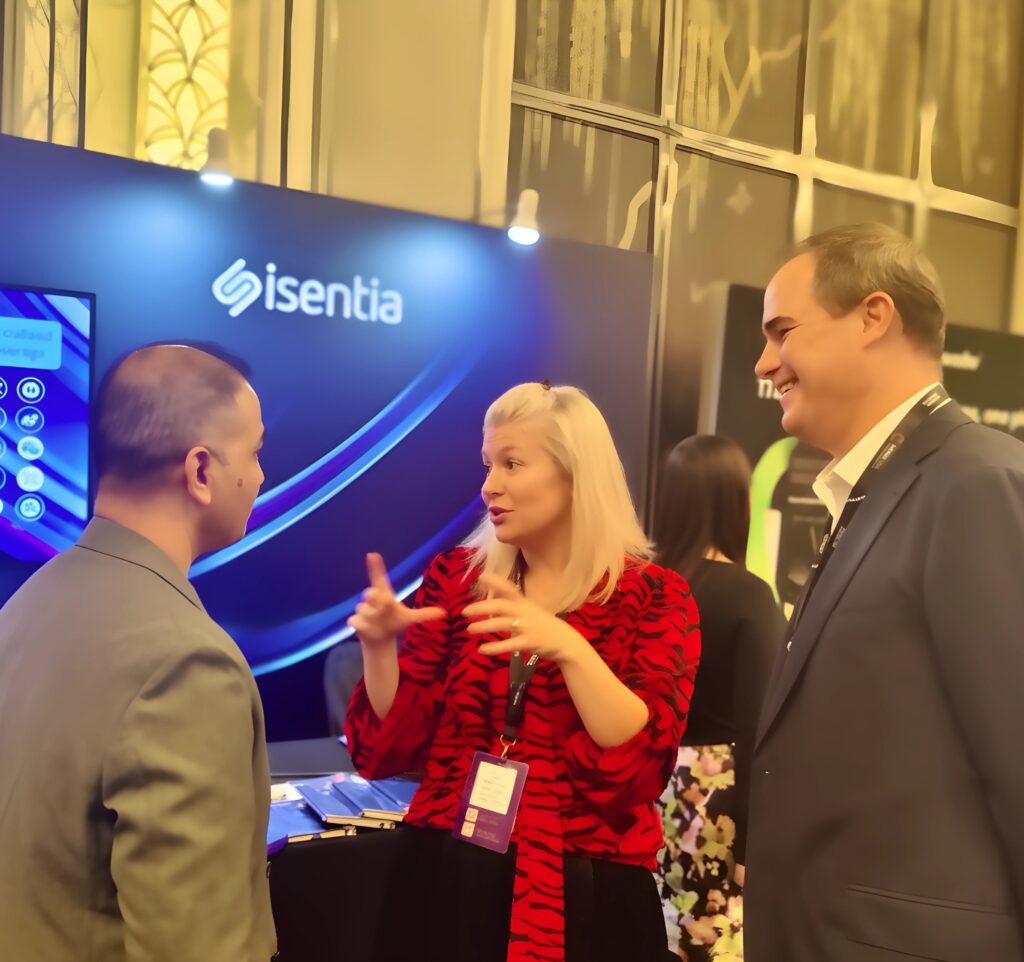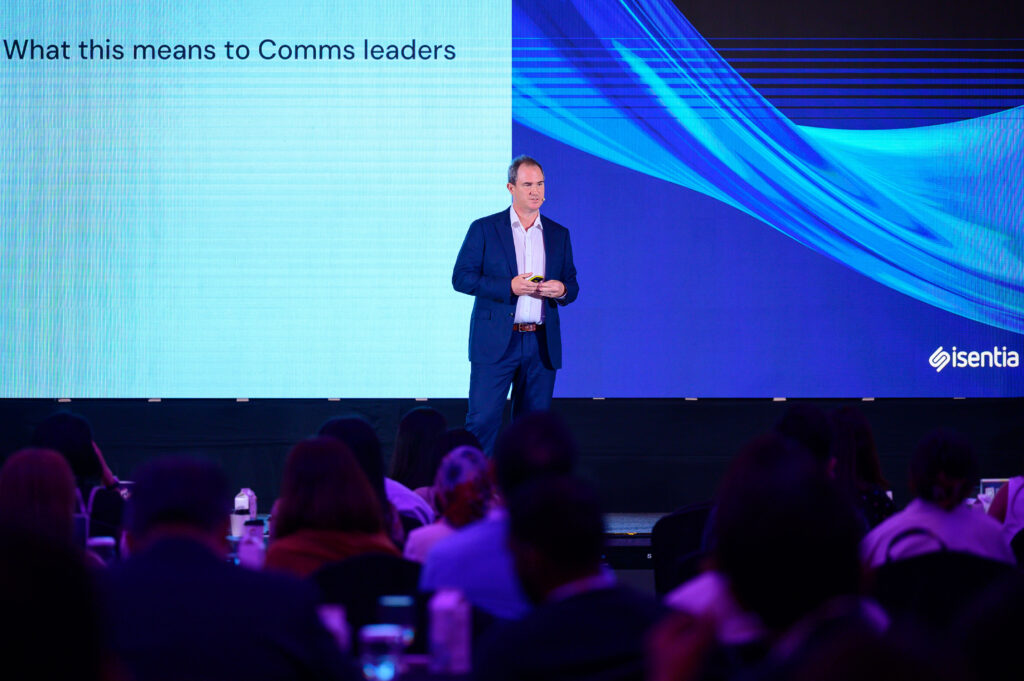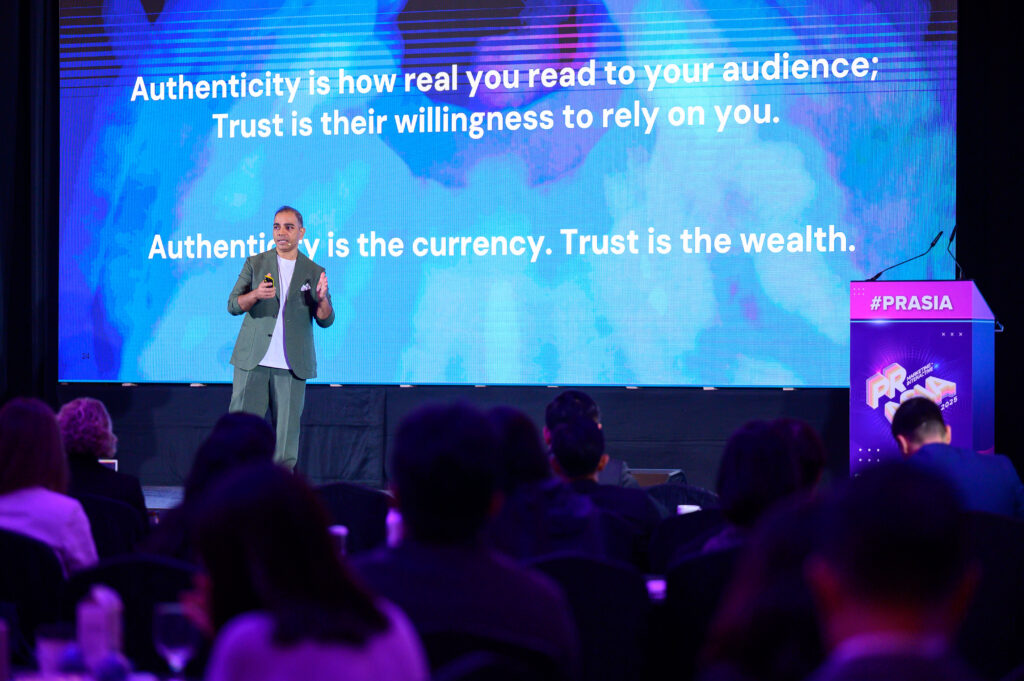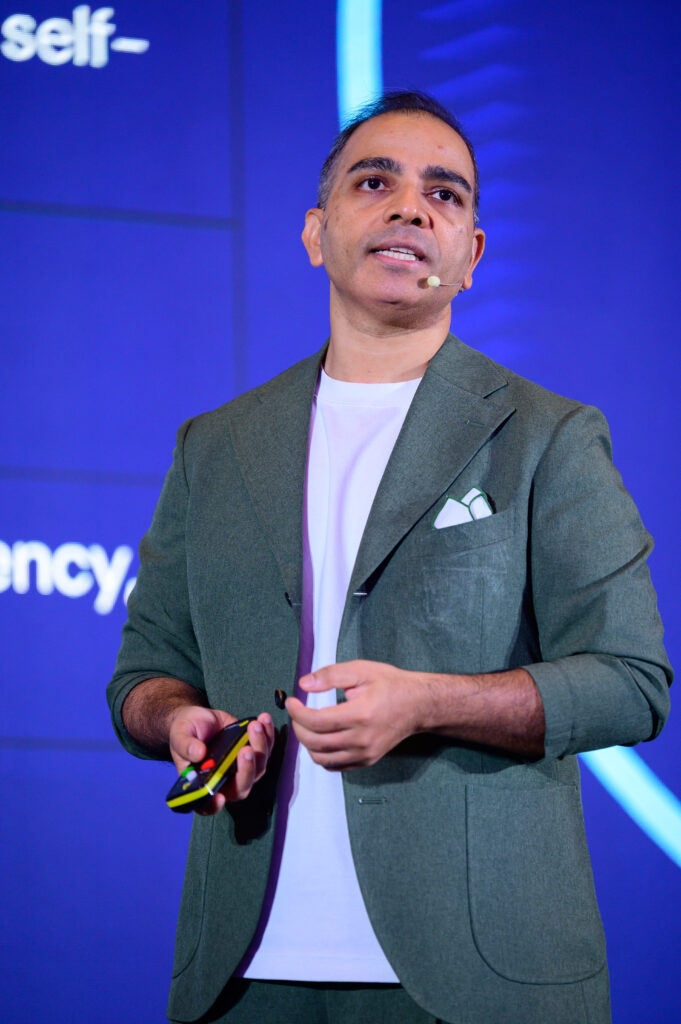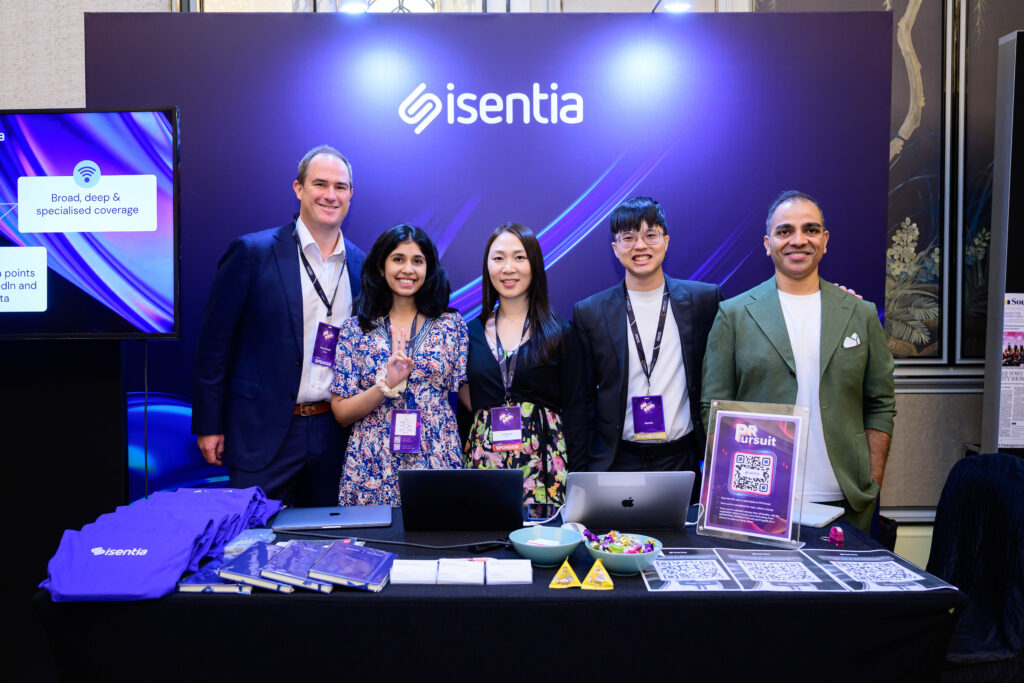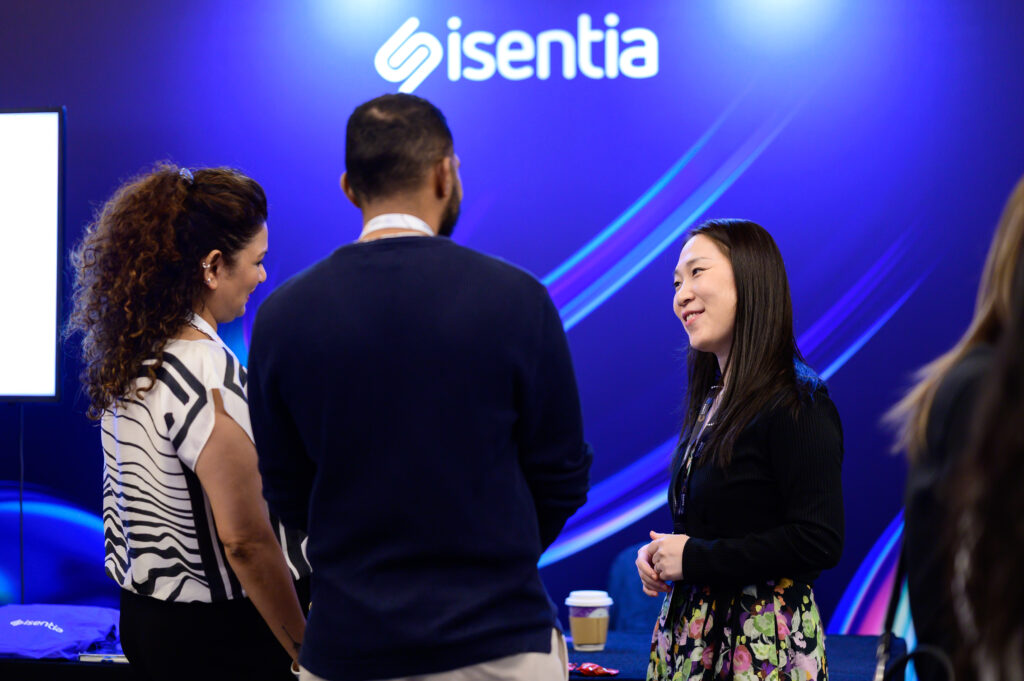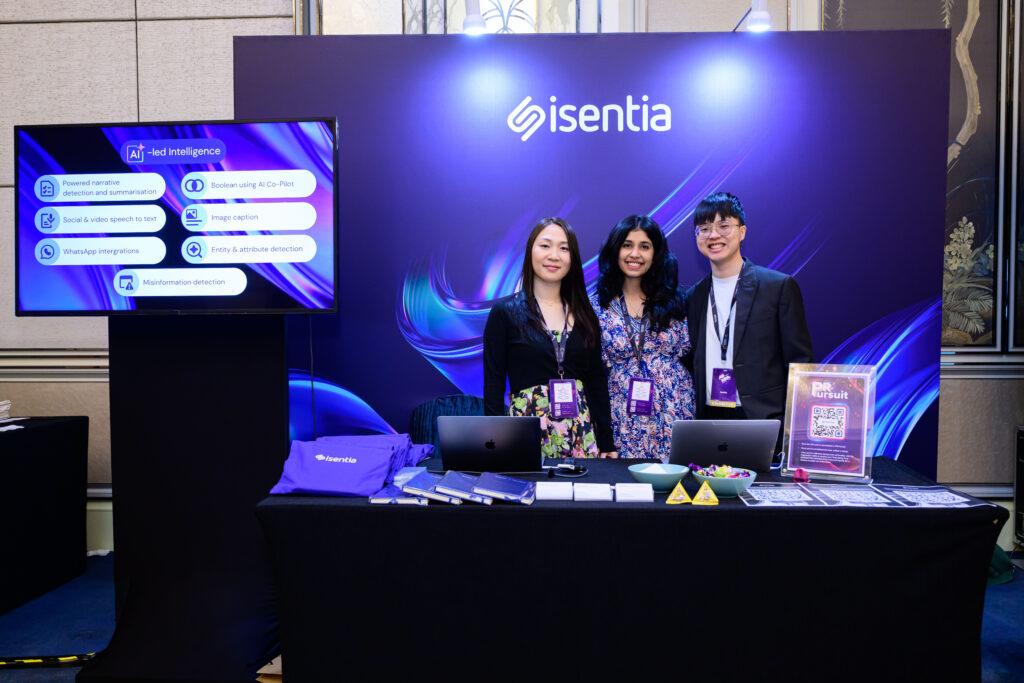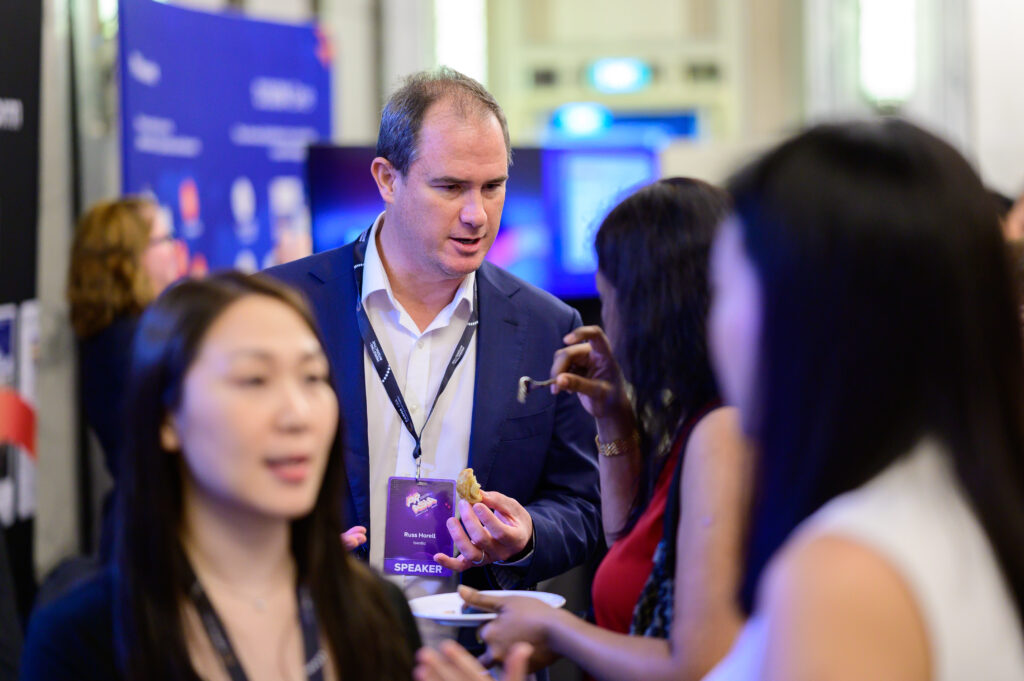object(WP_Post)#8647 (24) {
["ID"]=>
int(41613)
["post_author"]=>
string(2) "75"
["post_date"]=>
string(19) "2025-08-26 02:37:52"
["post_date_gmt"]=>
string(19) "2025-08-26 02:37:52"
["post_content"]=>
string(9442) "
We spoke at Marketing Interactive's PR Asia 2025 recently in Singapore around authenticity, trust and how these are at a strain, specifically in this new AI-powered world. We were amongst top leaders in the PR industry who touched upon how crisis and reputational threats need to be dealt with authentically. Most importantly, companies must be ready for any kind of crisis communications to be activated with statements from senior leadership, without a sense of "doing everything reactively", i.e., the logistics need to be in place so that teams have enough time to be responsive rather that reactive.
Audience perceptions of AI: do we know what's real?
Russ Horell, Chief Revenue Officer, APAC touched upon a few cases that set the tone around how audiences have not been able to clearly identify which online content is real and have ridden the wave until someone figures it out. The two main examples that were touched upon were around how Mia Zelu, a virtual influencer on Instagram became the face of Wimbledon this year, until everyone realised she's not real.
The other case was around former Astronomer CEO Andy Byron's fake statement that was circulated - although not AI, it gives us an insight into how trust in CEOs is at an all time low, with this incident taking it further underground. In this world of fakes, audiences have given up on trying to decide what's real. This needs to be urgently addressed by PR leaders when it comes to brand communications, especially during a crisis.
Our CEO for Pulsar Group, Joanna Arnold was in attendance of the speaking session and at our booth to support and motivate as always. This gave us an extra level of confidence to interact with the visitors at the booth and to speak with them about who we are, what we do and more insight into our content.
Assigning cues to audience reactions
With all this in mind, we wanted to understand how leaders, specifically PR leaders can own their content strategy and decision making when it comes to responding effectively.We analysed posts by top executives and c-suite leaders on LinkedIn and audience behaviour to those posts. We then assigned cues - cues that identify which post is the most authentic in terms of cultural relevance, identity, tone & style, trust, information accuracy etc. Prashant Saxena, Vice President, Revenue & Insights, SEA expanded upon how these cues can be utilised to increase engagement 3-fold. This transforms authenticity from subjective performance into an executable framework that any leader can deploy. The pattern is clear, and posts with multiple authenticity cues consistently outperform those relying on tone alone.
Booth interactions
Jenna Wang, Business Development Director and Christian Chan, Business Development Manager for Isentia, Singapore were having engaging and insightful discussions with attendees, considering the topic at hand is an important one with an almost "what to do" playbook that leaders can use effectively in their communications. We knew many would be keen on understanding and wanting to know more as a follow up to the speaking session. Nikita Gundala, SEA Marketing Lead, managed the content and the logistics around the booth display along with timely updates on our social media.
We had a wonderful experience at PR Asia this year and we look forward to being a part of (and hosting) more such events where we can bring together industry leaders to understand how they navigate new challenges and what can be done about them.
Interested in learning more? Email us at info@isentia.com
"
["post_title"]=>
string(80) "PR Asia 2025: how authenticity is the new currency for PR leaders in this AI era"
["post_excerpt"]=>
string(0) ""
["post_status"]=>
string(7) "publish"
["comment_status"]=>
string(4) "open"
["ping_status"]=>
string(4) "open"
["post_password"]=>
string(0) ""
["post_name"]=>
string(74) "pr-asia-2025-authenticity-new-currency-ensuring-trust-in-a-blurred-reality"
["to_ping"]=>
string(0) ""
["pinged"]=>
string(0) ""
["post_modified"]=>
string(19) "2025-08-27 05:04:58"
["post_modified_gmt"]=>
string(19) "2025-08-27 05:04:58"
["post_content_filtered"]=>
string(0) ""
["post_parent"]=>
int(0)
["guid"]=>
string(32) "https://www.isentia.com/?p=41613"
["menu_order"]=>
int(0)
["post_type"]=>
string(4) "post"
["post_mime_type"]=>
string(0) ""
["comment_count"]=>
string(1) "0"
["filter"]=>
string(3) "raw"
}
Blog
PR Asia 2025: how authenticity is the new currency for PR leaders in this AI era
We spoke at Marketing Interactive’s PR Asia 2025 recently in Singapore around authenticity, trust and how these are at a strain, specifically in this new AI-powered world. We were amongst top leaders in the PR industry who touched upon how crisis and reputational threats need to be dealt with authentically. Most importantly, companies must be […]
object(WP_Post)#11063 (24) {
["ID"]=>
int(2196)
["post_author"]=>
string(2) "36"
["post_date"]=>
string(19) "2019-06-25 03:22:13"
["post_date_gmt"]=>
string(19) "2019-06-25 03:22:13"
["post_content"]=>
string(2835) "
A World Of Information Without Noise
Big data is more than just a buzzword. It’s one of the biggest challenges and opportunities facing almost every industry, business and brand today. With the potential value that it holds, investment in big data, machine learning and AI will be crucial for any business that wants to remain relevant through the ages.
Big Data
noun : extremely large data sets that may be analysed computationally to reveal patterns, trends, and associations, especially relating to human behaviour and interactions.
Each day 2.5 quintillion bytes of data is generated – a number that continues to grow exponentially. While we have seen improvements in the collection of data over recent years, the ability to synthesize meaning from this data is demanding more from engineers and their technology than ever before.
The problem that we face is sorting through these huge chunks of data to separate the noise from what is important to individuals and their organisation. While automation has offered speed, simplicity and efficiency, the ‘why’ is where the untapped value and excitement lies.
“Contextualisation is key. It's not about just collecting data, it’s about how that data can provide clear information that enables and inspires action”
Richard Spencer, Chief Marketing Officer at Isentia.
Rather than reflecting on past performance, answering the ‘why’ has the potential to lead action that focuses on influencing the tomorrow.
Beyond big data, the 'why' behind AI and machine learning may raise new questions. For instance the wider interplay behind machine learnings ability to translate to a language without any knowledge or assumptions about that language.
As teams start to ask these questions, the data starts to be reimagined. The perception of a data point transforms into breadcrumbs of a narrative that can tell a bigger story, and ultimately influence our thinking.
The question is, when big data becomes manageable and meaningful – how fast will it move into being predictive? And even beyond this, be able to simulate what is ‘likely’ to happen.
"
["post_title"]=>
string(23) "From Complex To Context"
["post_excerpt"]=>
string(318) "Big data is more than just a buzzword. It’s one of the biggest challenges and opportunities facing almost every industry, business and brand today. With the potential value that it holds, investment in big data, machine learning and AI will be crucial for any business that wants to remain relevant through the ages."
["post_status"]=>
string(7) "publish"
["comment_status"]=>
string(4) "open"
["ping_status"]=>
string(4) "open"
["post_password"]=>
string(0) ""
["post_name"]=>
string(23) "from-complex-to-context"
["to_ping"]=>
string(0) ""
["pinged"]=>
string(0) ""
["post_modified"]=>
string(19) "2019-09-25 03:35:20"
["post_modified_gmt"]=>
string(19) "2019-09-25 03:35:20"
["post_content_filtered"]=>
string(0) ""
["post_parent"]=>
int(0)
["guid"]=>
string(43) "https://isentiastaging.wpengine.com/?p=1878"
["menu_order"]=>
int(0)
["post_type"]=>
string(4) "post"
["post_mime_type"]=>
string(0) ""
["comment_count"]=>
string(1) "0"
["filter"]=>
string(3) "raw"
}
Blog
From Complex To Context
Big data is more than just a buzzword. It’s one of the biggest challenges and opportunities facing almost every industry, business and brand today. With the potential value that it holds, investment in big data, machine learning and AI will be crucial for any business that wants to remain relevant through the ages.
object(WP_Post)#8422 (24) {
["ID"]=>
int(1971)
["post_author"]=>
string(2) "36"
["post_date"]=>
string(19) "2019-06-25 02:36:30"
["post_date_gmt"]=>
string(19) "2019-06-25 02:36:30"
["post_content"]=>
string(7627) "
It’s official: artificial intelligence has arrived. But how will this disruptive technology transform businesses in the near future?
After more than a few false starts, artificial intelligence (AI) is finally here, and it’s powerfully disrupting the way business is done. We don’t need to ask if or when businesses will adopt AI – the question is where and how widely it will be employed.
AI is already a big player in the technology industry. In particular, there is a growing use of AI in IT’s backroom functions like cybersecurity and tech support. A Tata Consultancy Services (TCS) survey of 835 company executives found that nearly half of respondents were using AI to detect and fend off intrusions – the most frequent use of the technology. But a number of other industries are also opting for AI.
Early adopters
In entertainment, companies like Netflix and Amazon are using machine learning to help their movie recommendation engines. Health care has seen myriad applications, including virtual assistants for doctors, apps that can interpret test results and even AI-based spine surgery technology. In the financial sector, AI has been put to work in regulatory compliance and fraud prevention – PayPal uses a combination of its own AI program and human analysts to combat fraud, for example, and HSBC has teamed up with Silicon Valley startup Ayasdi to automate anti-money-laundering investigations.
Worldwide spending on cognitive and AI systems is expected to reach $12.5 billion this year, according to IDC, a whopping increase of 59.3 percent over 2016. Much of this growth is powered by use cases like the examples above. But there’s another area where AI is rapidly being adopted: automated customer service agents, or chatbots as they’re more commonly known.
Customers now expect AI to be used by companies and they are comfortable interacting with the technology (up to a point). Research from HubSpot found that nearly half of people are happy with the idea of buying products from a chatbot. Perhaps more importantly, 40 percent of respondents said they were indifferent about receiving customer support from either a chatbot or human – provided they got the help they needed fast and easily.
Dealing with data
Whether patrolling a computer network for intrusions or trawling through financials for signs of fraud, AI is most often employed to intelligently handle vast amounts of data quickly. “AI is best deployed in companies with significant amounts of data and robust data systems,” says Andrea Walsh, Isentia’s CIO.
Gartner predicts that, in 2018, half a billion users will save two hours a day as a result of AI-powered tools. Every time a business gains efficiencies, it saves money – and that is AI’s chief benefit.
AI’s smarter processing power is also helping companies generate more quality leads on new customers, using IBM’s Watson AI, for example. Finding, contacting and closing new sales is a time and resource-heavy activity. But AI-based sales assistants can tirelessly work on reaching out to people, while intelligently analyzing data on leads. This can then be effectively communicated with point-of-sale staff.
When employees hear the word “efficiency,” they often assume it will lead to lay-offs. While there is no question that some jobs will be replaced by AI programs, the naysayers are largely exaggerating their mass-redundancy predictions.
AI is a data-cruncher, and it is often employed to take care of something that didn’t even exist 30 years ago: big data. When it accomplishes its analysis, a human is still needed to interpret the results, such as in cybersecurity and anti-fraud scenarios. Even in the case of customer service chatbots, these will mostly be applied to routine queries and simple support functions, augmented by human representatives for complex problems. “AI should not stand alone as a technology,” say Walsh.
Enhancing existing infrastructure
As with all industrial revolutions, AI will create jobs even as it replaces them. There are already glaring shortfalls in STEM-trained employees across the world, and that’s likely to continue as the rapid pace of technological transformation outruns educational reforms. But eventually, new generations will be trained and educated to do jobs created by innovative technologies like AI.
Any business can benefit from AI programs, but when it comes to how broadly they adopt AI, companies need to look at how the technology can augment their existing capabilities. Instead of replacing staff, current AI should be used to support them and put their invaluable human minds to the best use, saving tedious, data-crunching work for the machines. For customers, AI needs to be a helpful, timesaving addition to their experience, and companies should never try to create the false impression that a human is doing the work. People are ready for AI; companies need to be too.
Andrea Walsh, Isentia's Chief Information Officer
"
["post_title"]=>
string(51) "Transformative tech: What to expect from AI in 2018"
["post_excerpt"]=>
string(134) "It’s official: artificial intelligence has arrived. But how will this disruptive technology transform businesses in the near future?"
["post_status"]=>
string(7) "publish"
["comment_status"]=>
string(4) "open"
["ping_status"]=>
string(4) "open"
["post_password"]=>
string(0) ""
["post_name"]=>
string(50) "transformative-tech-what-to-expect-from-ai-in-2018"
["to_ping"]=>
string(0) ""
["pinged"]=>
string(0) ""
["post_modified"]=>
string(19) "2019-06-25 08:12:16"
["post_modified_gmt"]=>
string(19) "2019-06-25 08:12:16"
["post_content_filtered"]=>
string(0) ""
["post_parent"]=>
int(0)
["guid"]=>
string(36) "https://isentia.wpengine.com/?p=1971"
["menu_order"]=>
int(0)
["post_type"]=>
string(4) "post"
["post_mime_type"]=>
string(0) ""
["comment_count"]=>
string(1) "0"
["filter"]=>
string(3) "raw"
}
Blog
Transformative tech: What to expect from AI in 2018
It’s official: artificial intelligence has arrived. But how will this disruptive technology transform businesses in the near future?
object(WP_Post)#11064 (24) {
["ID"]=>
int(42649)
["post_author"]=>
string(2) "36"
["post_date"]=>
string(19) "2025-10-13 20:23:41"
["post_date_gmt"]=>
string(19) "2025-10-13 20:23:41"
["post_content"]=>
string(4358) "
Many organisations know stakeholder engagement matters, but turning that knowledge into an approach that consistently works is another story. At the recent webinar How to Master Your Stakeholder Strategy, leaders from Meridian Energy, the Victorian Department of Families, Fairness and Housing, and Isentia shared lessons from the field on what meaningful engagement really looks like.
Know who your stakeholders are
Stakeholders aren’t just on the periphery. As Mandy Griffiths from the Victorian Department of Families, Fairness and Housing explained, they are “the people who really have a great influence on whether the things that you’re working on or decisions you’re making are successful or not.” Internal stakeholders can be just as critical as external ones, especially in large organisations. Choosing terminology that reflects value and honesty helps too: her team prefers “critical friends” because it signals both importance and the possibility of differing views.
Build trust with evidence
Phil Clarke from Meridian Energy described how evidence can guide engagement strategies. By surveying 500 stakeholders mid-way through a two-year project, his team gained clear insights into what drives trust. This evidence-led approach, he says, “gives teams effectively a cheat sheet for what they need to do to build trust among their stakeholders.” Starting with data rather than assumptions helps teams focus their efforts where it matters most.
Learn through listening
Complex situations, like the pandemic, show why humility and iterative learning are essential. Mandy recalled that asking communities directly about their needs often revealed challenges her team hadn’t anticipated. “So many times we went in thinking we knew what the biggest pain points were, and it turned out to be something else entirely,” she said. Taking the time to listen ensures effort is spent on the right priorities.
Measure, adapt, and personalise
Measurement underpins high-performing strategies. Ngaire Crawford from Isentia stressed that “late teams don’t guess, they measure,” from establishing baselines to tracking engagement and adapting based on what the data shows. Effective strategies also go beyond simple demographics, grouping stakeholders by motivations, concerns, influence networks, and communication preferences. Closing the feedback loop is crucial: “Stakeholders who feel heard are the ones that are most likely to become advocates,” Ngaire explained.
Key takeaways
- Treat stakeholders as central, not peripheral.
- Use evidence to understand trust and guide decisions.
- Listen first, act later, assumptions can mislead.
- Measure and adapt continuously.
- Personalise engagement based on motivations, not just demographics.
The common thread from the webinar: engagement works best when it’s informed, iterative, and genuinely centred on the people involved.
Watch the full webinar here, or contact our team to see how Isentia’s SRM solutions can help you achieve your stakeholder goals.
"
["post_title"]=>
string(59) "Building stakeholder strategies that work in the real world"
["post_excerpt"]=>
string(0) ""
["post_status"]=>
string(7) "publish"
["comment_status"]=>
string(4) "open"
["ping_status"]=>
string(4) "open"
["post_password"]=>
string(0) ""
["post_name"]=>
string(31) "stakeholder-engagement-strategy"
["to_ping"]=>
string(0) ""
["pinged"]=>
string(0) ""
["post_modified"]=>
string(19) "2025-10-13 20:23:45"
["post_modified_gmt"]=>
string(19) "2025-10-13 20:23:45"
["post_content_filtered"]=>
string(0) ""
["post_parent"]=>
int(0)
["guid"]=>
string(32) "https://www.isentia.com/?p=42649"
["menu_order"]=>
int(0)
["post_type"]=>
string(4) "post"
["post_mime_type"]=>
string(0) ""
["comment_count"]=>
string(1) "0"
["filter"]=>
string(3) "raw"
}
Blog
Building stakeholder strategies that work in the real world
Many organisations know stakeholder engagement matters, but turning that knowledge into an approach that consistently works is another story. At the recent webinar How to Master Your Stakeholder Strategy, leaders from Meridian Energy, the Victorian Department of Families, Fairness and Housing, and Isentia shared lessons from the field on what meaningful engagement really looks like. […]
